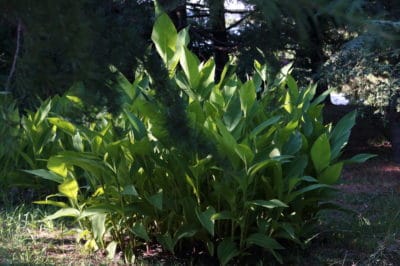Where and How to Plant Laurel for Hedging?
Bay Laurel will thrive in full sun or partial shade. If you desire laurel as a hedge but live in a colder climate, Portuguese Laurel is very similar to Bay but cold hardy. Plant Bay Laurel anytime of the year. Typically planting with 2-foot spacing is the rule for a dense hedge, but with a little more patience you can achieve this at 3-foot spacings.
It is not recommended to plant bare root bay laurels. They tend to have a low success rate compared to other nursery options. Root-balled plants are far superior. These are dug up, soil and all, and wrapped in fabric to protect them during the dormant season. Get them in the ground before they leaf out and they will do fine.
Pruning and Care
Laurel is an excellent topiary bush, through pruning you can achieve any shape you like. It will stay dense all the way to the ground, or you can shape it like a tree with a trunk at the base. Pruning and care apply to both laurel hedges planted in the ground and in pots. Laurel plants in pots can easily be cultivated into a privacy hedge.
The best season to prune Bay Laurel hedges is spring. When pruned early in the year, the plant has ample time to fill in any empty patches left from pruning. All laurels can take a hard prune and grow back, but remember the growth rate is slow so it will take some time. Hedges can be pruned to as narrow as 18 inches.
In the spring when you prune, mulch the plants with 1-2 inches of finished compost. You can also apply liquid organic fertilizers at this point in time if your plants show signs of nutrient lack.
Troubleshooting
For the most part, laurels aren’t too picky. Some problems that gardeners experience with Bay Laurel include:
- Watering Issues
- Root Establishment
- Mildew
Bay Laurel can be sensitive to under or over watering. Underwatering will cause leaves to yellow, crisp up and fall off. Over-watering leads to root rot which is easy to smell if you dig into the soil. If some plants survive but not others, it may be your roots struggling to establish.
Laurel is well known for its low propagation rates, purchasing healthy plants and taking extra care when planting will prevent this. Powdery mildew presents itself as a dusty white powder that withers and wilts the leaves of a plant. It is common in wet seasons and climates and typically resolves itself when conditions improve.
